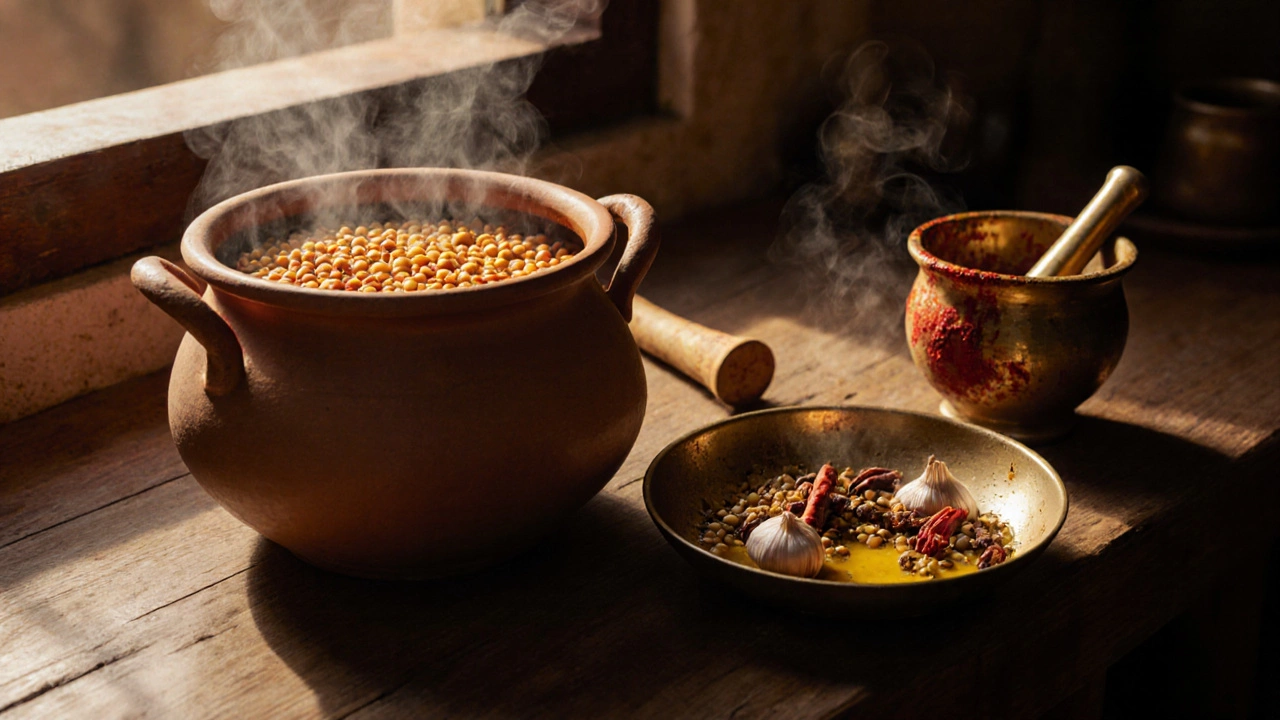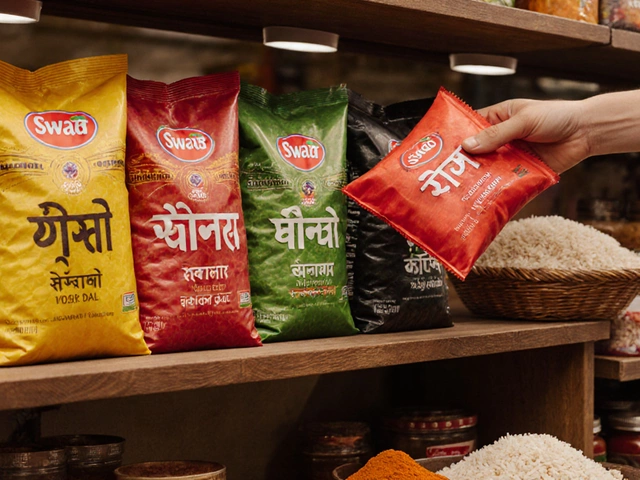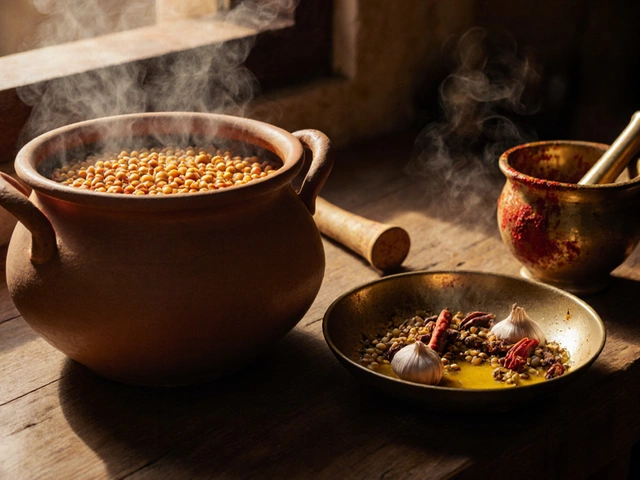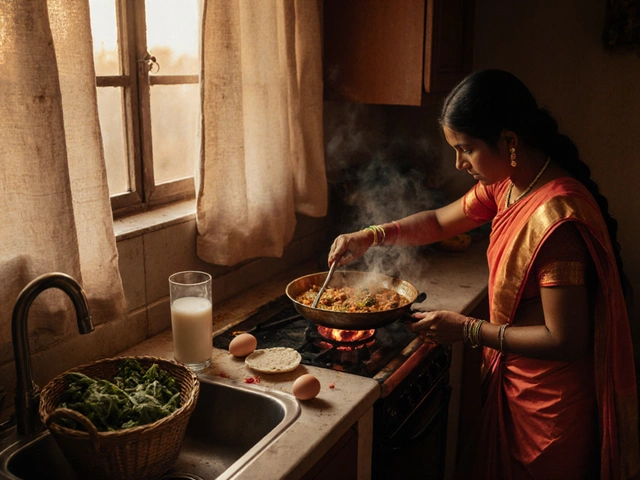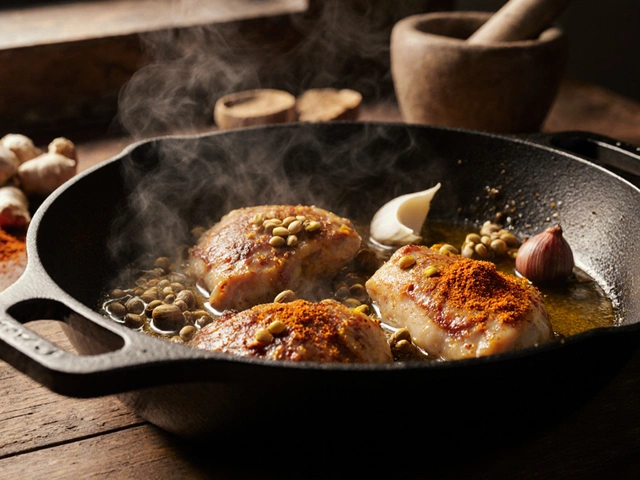Dal Translation Tool
When you see dal on a menu or in a recipe, you might wonder: what’s the English word for this? There isn’t a single perfect translation-but that’s not because English is missing a word. It’s because dal isn’t just one thing. It’s a whole category of food that’s been cooked, spiced, and loved across India for centuries.
Dal Isn’t Just One Dish
Dal doesn’t mean one specific bean or lentil. It’s the Hindi and Urdu word for dried, split legumes. That includes red lentils (masoor dal), yellow split peas (chana dal), black gram (urad dal), and even split mung beans (moong dal). In English, people often call these simply "lentils"-but that’s not quite right. In the UK and US, "lentil" usually means the small, round, green or brown ones you find in supermarkets. Dal covers those, but also many others you won’t find on most Western shelves.
Think of it like "soup." You wouldn’t say "French onion soup" is the English version of "borscht." They’re both soups, but they’re not the same thing. Dal is like that-it’s a family of dishes, not one single item.
What Do People Actually Call Dal in English?
If you’re writing a recipe for an English-speaking audience, here’s what works best:
- Use "lentils" when you mean red, yellow, or green split lentils (like masoor dal or moong dal).
- Use "split peas" for chana dal (yellow split chickpeas).
- For urad dal (black gram), say "split black gram" or "split black lentils"-some brands label it that way.
- When in doubt, say "Indian lentil stew" or "spiced dal." That’s what most cooks in the UK and US do.
Try searching "dal recipe" on Google in the US or UK. You’ll see tons of results with titles like "Easy Indian Red Lentil Soup" or "Quick Yellow Dal with Garlic." That’s because "dal" alone doesn’t mean much to most people outside South Asia. But "red lentil soup"? That’s familiar.
Why Does This Matter for Cooking?
Getting the name right helps you find the right ingredients. If a recipe says "1 cup dal," and you go to the store looking for "dal," you’ll walk away confused. But if you know it means "red split lentils," you’ll find them in the pulse aisle next to rice and quinoa.
Here’s what to look for on packaging:
- Masoor dal → red split lentils
- Chana dal → yellow split chickpeas
- Urad dal → split black gram or split black lentils
- Moong dal → split mung beans
Some stores even label them as "Indian lentils" or "South Asian lentils." That’s your clue.

How Is Dal Cooked in India vs. the West?
In India, dal is usually simmered until soft, then tempered with cumin, mustard seeds, garlic, and dried chilies. It’s served with rice or flatbread. Simple. Comforting. Daily food.
In Western kitchens, people often treat it like a soup or side dish. They add tomatoes, onions, and cream. Some even blend it smooth. That’s not wrong-but it’s not traditional either.
Here’s the truth: there’s no single "correct" way. But if you want to cook dal the way it’s made in most Indian homes, keep it simple:
- Rinse 1 cup of red lentils until the water runs clear.
- Boil with 3 cups of water, a pinch of turmeric, and salt.
- Cook for 15-20 minutes until mushy.
- Heat a teaspoon of oil or ghee. Add ½ tsp cumin seeds, 2 crushed garlic cloves, and a dried red chili.
- Pour the tempering over the cooked lentils.
- Stir, let sit for 2 minutes, then serve.
That’s it. No fancy ingredients. No long prep. Just flavor built layer by layer.
What’s the Difference Between Dal and Lentils?
Lentils are a type of legume. Dal is the Indian word for split, cooked lentils or pulses. So all dal is made from lentils-but not all lentils are dal.
For example:
- Green lentils from France? Those are lentils, but not typically called dal.
- Red split lentils from India? That’s dal.
- Black beluga lentils? Lentils. Not dal.
The difference is in how they’re used. Dal is cooked until it falls apart. It’s meant to be soft, creamy, and eaten with bread or rice. Western lentils are often kept firm for salads or stews.
Why Do People Say "Dal" Instead of "Lentils" in Recipes?
Because "dal" carries more meaning than just a food item. It’s tied to culture, memory, and home. A bowl of dal isn’t just protein and carbs-it’s the smell of cumin hitting hot oil, the sound of a pot simmering on a stove, the taste of comfort after a long day.
When you say "dal," you’re not just naming an ingredient. You’re naming a tradition. That’s why even in London, New York, or Toronto, Indian families still say "dal," not "lentil stew."
And that’s okay. You don’t have to translate everything. Sometimes, the best way to share a dish is to keep its name.
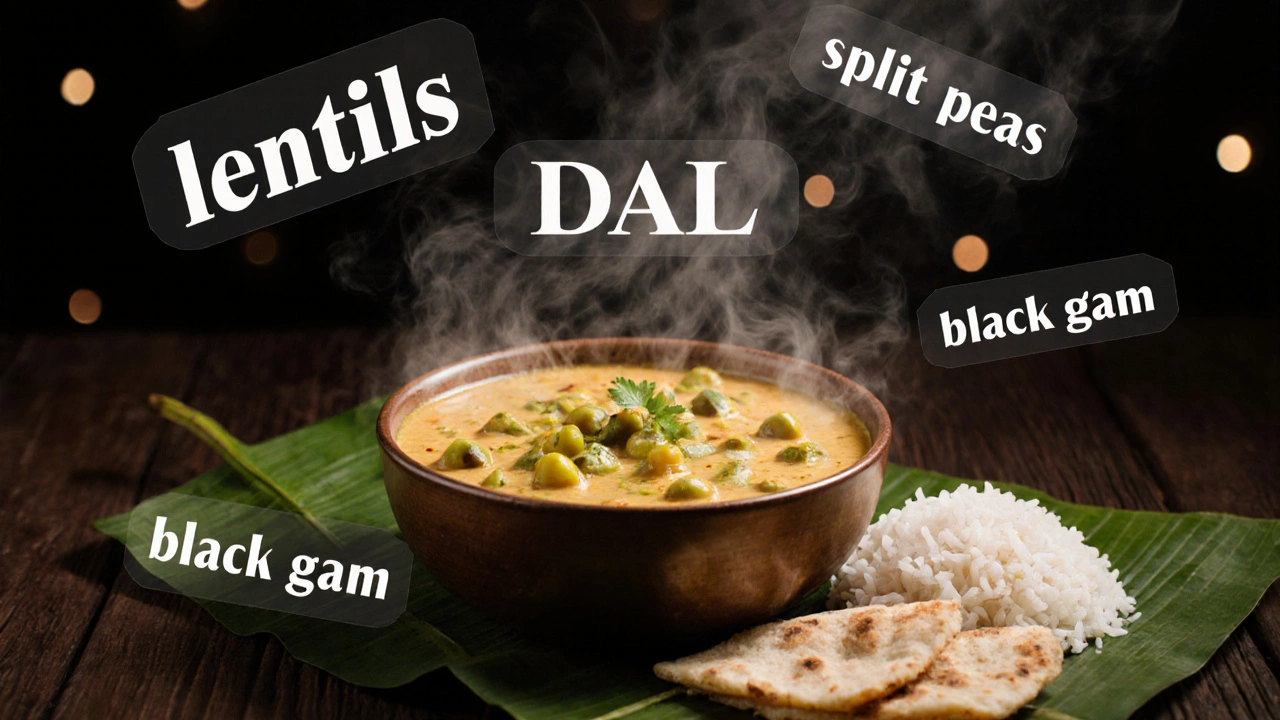
What If I Can’t Find Dal in My Local Store?
You don’t need to go to an Indian market. Most large supermarkets now carry split lentils in the international or health food section. Look for:
- Red lentils (they cook fast and turn golden)
- Yellow split peas (good substitute for chana dal)
- Split mung beans (for moong dal)
If you can’t find those, use any small, red or yellow lentil. They’ll still work. The flavor won’t be exactly the same, but the comfort will be.
And if you’re really stuck? Try this: cook any dried lentil with garlic, cumin, and turmeric. Add a splash of lemon at the end. You’ve made dal.
Final Thought: It’s Not About the Name
You don’t need to know the English word for dal to cook it well. You just need to know how to make it taste good.
Start with red split lentils. Add water. Add salt. Add turmeric. Let it simmer. Then, fry a little spice in oil and pour it on top. That’s the heart of dal.
Whether you call it dal, lentil stew, or Indian comfort food-it’s still the same thing. Warm. Simple. Good.
Is dal the same as lentils?
Dal is made from lentils, but not all lentils are called dal. Dal refers specifically to dried, split legumes-like red, yellow, or black lentils-that are cooked into a soft stew in Indian cooking. Western-style lentils, like green or French lentils, are usually kept firm and aren’t typically called dal.
What is the English word for dal?
There’s no single English word for dal. Most recipes use "lentils" when referring to red or yellow split lentils. For accuracy, you can say "Indian lentil stew" or "spiced dal." The term "dal" is often kept as-is in English-language cookbooks because it carries cultural meaning.
Can I use any lentil to make dal?
Yes, you can use any small, split lentil-red, yellow, or even green. Red split lentils cook the fastest and break down the most, making them the closest to traditional dal. Green lentils will stay firmer and need longer cooking, but they’ll still make a tasty, hearty dish.
Why is dal so popular in Indian households?
Dal is popular because it’s cheap, nutritious, and easy to make. It’s high in protein and fiber, cooks quickly, and keeps well. It’s also vegetarian-friendly and pairs with almost everything-rice, roti, even plain bread. For many families, it’s a daily staple, not a special dish.
Do I need special spices to make dal?
No. The base is just lentils, water, salt, and turmeric. The flavor comes from the tempering-oil, cumin seeds, garlic, and dried chilies. That’s all you need. Fancy spices like garam masala or asafoetida are optional. Many Indian homes make dal with just those five ingredients.
Next Steps: Try This Simple Dal Recipe
Grab a pot. Get 1 cup of red split lentils. Rinse them under cold water until the water runs clear. Add 3 cups of water, ½ tsp turmeric, and 1 tsp salt. Bring to a boil, then lower the heat and simmer for 15 minutes until soft.
While that cooks, heat 1 tbsp oil in a small pan. Add ½ tsp cumin seeds. When they start to pop, add 2 crushed garlic cloves and a dried red chili. Let them sizzle for 10 seconds. Pour this over the lentils. Stir. Let it sit for 2 minutes.
Serve with rice or flatbread. That’s dal. No fancy name needed. Just good food.
